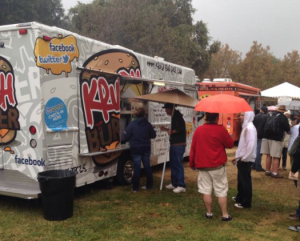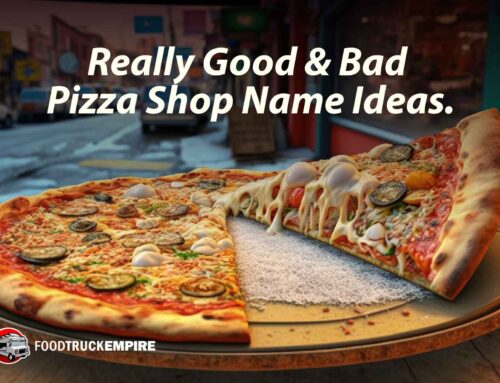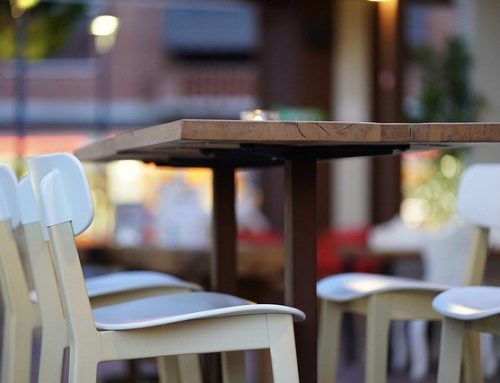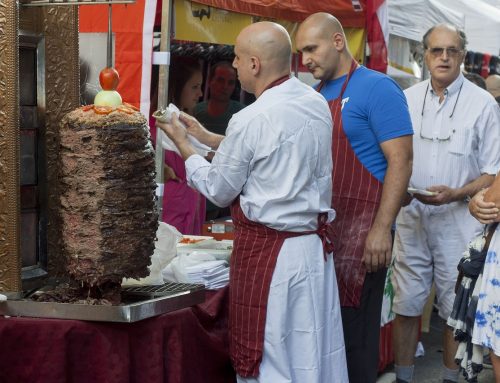Want to open a burger joint on a budget? I’m here to help you take a bite out of this $100 billion dollar industry. In the US, there are nearly 50,000 burger joints nationwide.
If you want to start a burger joint without risking your entire life savings, continue reading as I explain the steps you’ll need to open.
Write Your Burger Business Plan

Want to sell burgers?
A business plan is the most important thing you need to work on before proceeding with the rest. Remember, a business plan is the heart of your business, and all your decisions should be backed data gathered in the plan. Do your research and be as detailed as possible.
Prepare an executive summary of what your business will be about. This part is where you introduce your business to potential investors so you need to include some basic information about the business. Next is your marketing plan. Let your investors know how you plan to market the business and compete with the already established brands. Aside from your marketing plan, you need to give an overview of your operating plan – how you plan to work with your staff to ensure that the burger joint will be up and running and that you are meeting the needs and wants of your customers.
Any business will need financial analysis. This is extremely important because in this part, you will explain how you will go about financing all the expenses to keep your business running. Explain in detail all the materials and products that need to be bought and taken care of, as well as how much you will be allotting for staff’s salary, and how much you need to sell to get back your profit.
Write a SWOT analysis so you know what to expect in terms of your business’ weaknesses, threats, and how you can maximize the strengths and opportunities to ensure it will turn out to be a success.
How Much Can You Make with a Burger Joint?
You can expect to make $1,000 – $10,000 per day in gross sales operating a burger joint. The typical burger joint will bring in anywhere from $200,000 – $1.5 million in gross revenues. The gross revenue numbers will be determined by the number of customers you can bring in and how fast you can crank out patties. The establishments that hit the upper range of sales are usually franchise burger joints that have optimized their cooking and serving process.
Before you open a burger joint, I recommend working backwards and figuring out how many sales you’d need per day to make the venture worth the investment. I also want you to consider whether or not that number is feasible. Sure… I’d love to sell 10,000 burgers in a day, but the reality is that volume isn’t going to be possible in a small business.
Take a look at how much my friends burger joint Ancho Honey makes per unit:
- Burger patty: $1.30
- Seeded Brioche Bun: $0.68
- 2 Slices of American Cheese: $0.22
- Caramelized onion, lettuce, tomato, burger sauce: $0.50 (approx.)
Total Cost Per Burger: $2.70
Menu Price: $8.00
As you can see, if you were able to sell 200 burgers per day, you could generate $1,600 in gross sales and $1,060 in gross profit before expenses like labor, insurance, and rent. Keep in mind that most burger joints will boost their profits further by offering a side of French fries or a soft drink with every burger you sell. Adding a few appetizers or desserts like milkshakes is another smart option to boost average order values.

Burger to go.
The success of a burger joint isn’t solely dependent on good cooking. It’s a combination of different factors such as great location, quality service, outstanding marketing, and creativity.
How Much Will It Cost To Open A Burger Joint?
Like any other business, opening a burger joint will cost you big bucks. Renting a space, purchasing furniture and kitchen needs, stocking burger ingredients, and putting your plans to life are just some of the things that are included in your list of total expenses when opening your burger joint.
Commercial space – If you don’t have your own space, you’re most likely to rent or buy one in order to open your business. Depending on the location and its proximity to the bus stop, train station, schools, and other important points, it can go up, or way higher. For example in Los Angeles, the average rent is $2.95 per square foot. So, for 2,000-square foot space, expect to pay up to $5,900 every month. Don’t forget that if you’re renting, you most likely have to pay a deposit the value of a three to six months lease. Keep in mind that lease payments vary significantly depending on region.
Related Reading: 201 Burger Slogans and Caption Ideas Perfect for Social Media Marketing
Renovations and décor – Beautifying your place is going to cost you a lot but you can save by choosing less expensive materials. Depending on your burger joint’s concept, you can also save on décor by going for a minimalist design with less extravagant design pieces to fill up your space. Redoing the wall paint, tiles, and windows can go from $5,000 to more than $50,000.
Another way to save money on renovations is going for essentials only. Maybe you want to add a TV in your burger joint, but that can wait. Focus on what’s important and do the rest when there’s extra money. You can also save money by looking for a property that is already built for a food business. This way, having features like a customized kitchen can save you dollars instead of buying one that can cost as much as $250,000.

Hey ma! Look what I made.
Obtaining license and permits – Before you can get your business going, you must obtain legal permits and licenses. The costs of permits and licenses differ depending on what state you’re in but usually, it is between $50 to $100.
Ordering and payment technology (POS systems) – Keep track of orders, inventory, and payment by getting a Point-of-Sale (POS) system or something similar that costs about $20,000.
Signage and advertising – Once your burger joint is up, you’d want to make a splash and have signage and advertising materials to let everyone know your business is open. These things usually cost around $20,000 to $30,000.
Utilities – To keep your business open, you have to pay for utilities such as electricity, water, phone, and internet connection. You would be looking to pay $2,500 a month for these.
Food and beverage supply – The cost for food and beverage would depend on what you would be selling to your customers. Finding a local supplier that sells fresh ingredients can save you money since you will be going back and forth, buying from them almost every month, or depending on how often you need to restock your supply.
Burger Menu: What Type Of Burgers Work Best?
Whether you’re opting for a big, fatty burger or looking to offer vegan burgers, it all depends on your target market. Who do you want to attract? Do you want to go with the average target market of people who love big, fatty burgers, or do you want a more exclusive audience of healthy eating people who watch what they eat?
Both the big, fatty burgers and vegan burgers have their own target market. It’s up to you to decide what market you’re willing to go for. If you want to compete with McDonald’s, Burger King, and Wendy’s, then you have to make sure you are offering more than the usual big, juicy burgers they are already offering the market.
Related Reading: 250+ Creative Burger Shop Business Names
What’s great about vegan burgers is that there aren’t a lot of burger joints that offer them. This can be a good selling point especially since you also have an exclusive market to sell to. Either way, researching the types of burgers you will offer starts with knowing what your competitors are selling. What can you improve and what else is missing?
Start from there and work towards creating different burger types that you know will suit your market, whether it’s for the average people who love greasy, juicy burgers or the health-conscious, vegan lovers who are looking for better options for their lifestyle choice.
Get Your Ingredients, Supplies, and Equipment
Sourcing for ingredients, supplies, and equipment means doing a lot of research on good and efficient suppliers in the market. Allot time to go around and check out suppliers that can give you a good deal instead of rushing to purchase everything you need last minute.

Outside the Krush Burger truck.
Work in a timeline so you have a better idea of when everything must be set and final. Ask other business owners for tips or recommendations for markets and suppliers where you can save money without sacrificing quality and service. It’s okay to go back and forth and spend time meeting with distributors so know you’re paying for quality and won’t have any regrets in the future.
Because you are opening a restaurant, your main priority should be ensuring you are using quality ingredients not just for your customers but for your reputation as well. It is always best to buy ingredients in bulk to save money but avoid overbuying things and have ingredients spoiling by having an organized list of things you need for a specific time frame.
When it comes to equipment, purchase first those that are essential to keep your restaurant going. Anything extra can be bought later on. Invest in good equipment to avoid repairs or replacements in the future.
Find A Restaurant Location
Location is key to the success of your business. You need to find one where there is good foot traffic, at the same time, it should not be buried in a sea of competitors that are already serving the market. What you don’t want to happen is squeezing your burger joint in a busy business street where there are four to five other burger joints in place.
Depending on your location, some places cost more than others but you have to remember that you can always adjust your budget on some other things. A location for your business should be under the list of non-negotiables.
Franchise or Independent Restaurant?
If you can’t decide whether to open a franchise or independent restaurant, know that the different risks and potential rewards vary. Although one is not proven to be more successful than the other, it all depends on how much control and freedom you want to have while running your restaurant business.
It boils down to the type of owner you are, what sacrifices you are willing to take and how much work you’re willing to fork out to make your business a success. Keep in mind that the possibility of failure whether it’s a franchise or independent restaurant is prevalent either way. But deciding which type of ownership you choose can give you better chances of success along the way.
Independent Ownership
As an independent restaurant owner, all responsibilities fall on you. Your decision on all things about the restaurant can make or break your business. You may consider being an independent restaurant owner if you have researched everything you need about the concept of your business, you don’t want to undergo the tedious approval process, and you want to grow a brand of your own starting from scratch.
Franchise Ownership
If you are buying a franchise restaurant, you are handed over a business that’s already proven to work. From branding to marketing, most of these franchise businesses have everything set and planned for you. Consider a franchise restaurant if you don’t mind waiting for franchise approval, corporate scandals that involve big franchise businesses, and want the branding, marketing, and reputation of the business to be set beforehand.
Burger Truck or Restaurant?
Opting to open a burger truck will obviously cost you less than opening a restaurant, given that renting a bigger space is equivalent to spending more money. Obviously, there are pros and cons in choosing a truck over a restaurant and if you originally wanted to open a restaurant, downsizing to a burger truck can be difficult to accept. However, there are some good benefits to opting for a burger truck!

Ever consider a burger bus?
Operating a burger truck means you will need less staff to work for you because there will be limited space in your work area. This also means you have to pay fewer people, too! Some of the usual restaurant materials such as tables and chairs will also be out of the list as customers will only be getting their orders for take-out.
If you really want to open a burger joint but are not willing to spend too much money, I say go for the burger truck because either way, you will still be selling burgers! With a truck, you can also stay at a certain location for days, and drive out to a different one. All you have to do is ensure that your marketing plan will highlight the pros of having a burger truck where you can park and go anytime, anywhere!
The Dining Area and Drive-Thru
Pre-pandemic, we are all about dining in and enjoying food outside of our homes. As the world adjusts to the pandemic, we realized the convenience of drive-thru and how it became the new norm not just in the fast-food industry, but independent restaurants have started setting up drive-thru areas as well. A report by Bluedot stated that three in four Americans are visiting drive-thrus more often than before the pandemic started.
If you can’t decide whether to have a drive-thru area for your burger joint, you might want to consider the following things:
Convenience – Drive-thrus are very convenient for the customers. They order, pay, and get their food without having to leave their cars, all completed within a span of a few minutes.
Increase capacity – Dining areas have limited capacity and although you can have a waiting area for customers, not everyone is willing to wait long lines just to dine in. Having a drive-thru area allows for customers to continuously line up, get served their food immediately.
Revenue stream – A drive-thru system is an added revenue stream for your business no matter how you look at it. As a business owner, you are always looking for ways to make more money, and with a drive-thru system in place, it will always be a good choice.
Raising Money
Deciding to start or continue a business requires a chunk of money whether it’s a franchise or independent restaurant. If you think your budget is still lacking, here are some ways you can raise money to keep your restaurant growing.
Crowdfunding – GoFundMe is a popular crowdfunding website that is used by entrepreneurs, investors, and the general public. It is easy to operate and adding a nice description of what your business idea is or how the money can help grow your business, you can reach out to people worldwide and help raise money. You can also ask friends and family to help raise awareness of your crowdfunding efforts.
Related Reading: 57 Critical Fast Food Industry Statistics and Trends
Venture Capitalists – Venture capitalists are professionals who provide financial support to start-ups and emerging companies that show high potential for growth. Just keep in mind that venture capitalists provide financial help with high rates of return instead of taking a share of your company or business.
Angel Investors – Here’s a favorable option to raise money for your burger joint. Angel investors, those who helped in funding Google and Yahoo, provide capital for start-ups in exchange for ownership equity or convertible debt.
Microloans – Loans are some of the most common ways business owners can raise money for growing or expanding their businesses because they have medium to low interest rates, have shorter payment periods and come with fewer strings attached.
Set Up Shop and Grand Opening

Inside a burger shop.
Setting up your shop involves working with professionals. If you want to make sure your shop looks great, opt to have an architect and interior designer to help you design how it will look from the inside out. Once everything is done, prepare your marketing materials and start advertising the grand opening. Social media is a good way to start making noise about your shop.
Post about the grand opening, your menu, what the shop looks like, opening hours, and more. Give a teaser on the burger menu so the people will know what to expect when they order. Some businesses offer discounts on opening day to attract more people too.
Marketing Your Burger Shop
Make a digital and traditional advertising plan to get the word out about your burger joint. If you operate a burger business, you’re serving a small market within only 2 – 4 miles of a location. How can you get in front of local consumers like this? You could accomplish this through targeted promotion on social like Facebook or YouTube. You could also get the word out through mailers, coupons, and special promotions that attract new diners.
Like I mentioned earlier, the success of your burger shop isn’t solely dependent on how good your burger tastes. How you market your business will affect how people see your brand and will help them decide whether it’s a good decision to make an effort to visit your shop or not.
Doing any type of business is always a risk and with how much money is needed to open one, you would want to make sure everything is well thought of and all your efforts will not go to waste.




